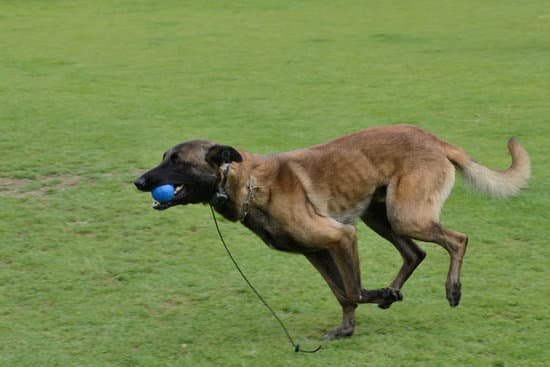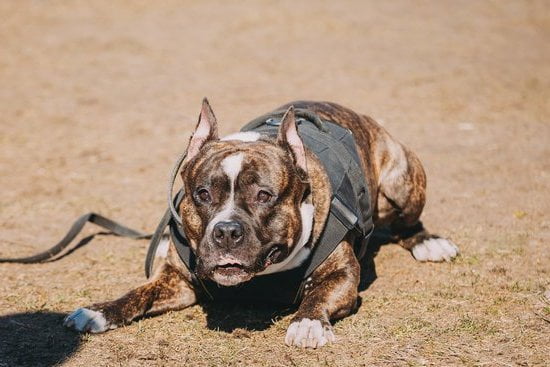Are you wondering how to train a dog to come back when called? Training your dog to respond to your call is not only important for their safety but also crucial for building a strong bond between you and your furry companion. Whether you’re at the park, on a hike, or just in your own backyard, having a reliable recall command can make all the difference in keeping your dog safe and under control.
Basic commands and obedience training are essential for every dog, but teaching them to come back when called is especially important. It’s not just about obedience; it’s about ensuring that your dog will listen to you even in distracting or potentially dangerous situations. This article will guide you through the process of training your dog to come back when called, including understanding the importance of this command and establishing a strong bond and trust with your pet.
When it comes to training your dog, there isn’t a one-size-fits-all approach. Every dog has its own personality and behavior, so it’s important to choose the right method of training that works best for them.
By understanding their tendencies and characteristics, you can tailor the training process to suit their needs and ensure better results. In the following sections, we’ll delve into establishing that strong trust with your furry friend before providing step-by-step guidance on teaching them this essential command.
Basic Commands and Obedience Training for Dogs
When it comes to training your dog, teaching them to come back when called is one of the most important commands they should learn. This command not only ensures their safety but also helps build a strong bond between you and your furry friend. Before focusing on the specific recall training, it’s essential to establish a foundation of basic obedience commands such as sit, stay, and leash walking.
To begin with, start by familiarizing your dog with their name and associating it with positive experiences. Use treats and praise to reinforce their response to their name. Once they are responsive to their name, move on to teaching them the “come” command. It’s crucial to make this training fun and rewarding for your dog so that they eagerly respond when called in any situation.
Here are some basic commands and obedience training methods to consider when preparing your dog for recall training:
1. Sit: This command helps in controlling your dog’s energy level and avoiding impulsive behavior.
2. Stay: Teaching your dog to stay will help build impulse control and prevent them from running off when outdoors.
3. Leash Walking: Proper leash manners are essential for maintaining control over your dog during walks and preventing them from bolting away when off-leash.
It’s important to keep these foundational commands in mind as you work towards teaching your dog how to come back when called. These commands lay the groundwork for a well-behaved and responsive canine companion.
Choosing the Right Method of Training for Your Dog’s Personality and Behavior
When it comes to training your dog to come back when called, it’s crucial to consider their unique personality and behavior. Not all dogs respond to the same training methods, so it’s important to choose an approach that aligns with your dog’s individual characteristics. Understanding your dog’s breed, temperament, and specific triggers will help you select the most effective method for teaching them a reliable recall.
One of the first considerations when choosing a training method for your dog is their energy level and motivation. Some dogs are highly food-motivated, while others may respond better to play or praise.
For food-motivated dogs, using treats as a reward during training can be highly effective in reinforcing the behavior of coming back when called. On the other hand, if your dog is more motivated by play or praise, incorporating these elements into the training process can yield better results.
It’s also important to take into account your dog’s past experiences and any potential fears or anxieties they may have. For example, if your dog has had negative experiences with certain training methods in the past, you’ll want to avoid those techniques and instead opt for more positive reinforcement-based approaches. Understanding how your dog responds to different stimuli will help you tailor their training plan accordingly.
In order to determine the best method of training for your dog’s personality and behavior, it may be beneficial to consult with a professional trainer or behaviorist who can provide personalized recommendations based on your dog’s specific needs.
| Training Method | Characteristics |
|---|---|
| Food-Driven | Highly effective for food-motivated dogs; use treats as a reward |
| Play-Based | Suitable for dogs motivated by play; incorporate toys and interaction into training |
| Praise-Focused | Ideal for dogs who respond well to verbal affirmation; use praise as a primary form of positive reinforcement |
Establishing a Strong Bond and Trust With Your Dog
Building Trust Through Positive Reinforcement
One of the key elements in training your dog to come back when called is building a strong bond and trust with them. Dogs are more likely to respond positively to training when they trust and feel connected to their owner.
Using positive reinforcement, such as treats, praise, and playtime, can help strengthen the bond between you and your furry friend. When your dog associates coming back when called with positive experiences, they will be more inclined to do so in the future.
Consistent Training and Communication
Consistency is crucial in establishing trust with your dog. By consistently using the same commands, body language, and tone of voice, your dog will begin to understand what is expected of them. This clear communication helps build trust as your dog learns to anticipate your cues and respond accordingly.
Spending Quality Time Together
Spending quality time with your dog is essential for building a strong bond. Engaging in activities such as walks, playtime, cuddling, and training sessions can further strengthen the connection between you and your dog. These shared experiences help create a sense of companionship and mutual understanding.
By prioritizing trust-building activities and positive reinforcement in your training regimen, you can form a solid relationship with your dog, making it easier to teach them how to come back when called. Remember that every dog is unique, so it’s important to tailor your approach based on their personality and behavior. Understanding your dog’s individual needs will ultimately lead to a stronger bond and successful recall training.
Step-by-Step Guide to Teaching Your Dog to Come Back When Called
Training your dog to come back when called is an essential skill that not only ensures their safety but also strengthens the bond between you and your furry companion. Whether you’re at the park or in your own backyard, having a reliable recall command can prevent potential dangers and provide peace of mind. Here’s a step-by-step guide to teaching your dog how to come back when called:
1. Start indoors: Begin the training in a quiet, indoor environment with minimal distractions. Put a long training leash on your dog and call their name followed by the “come” command. When they come to you, reward them with a treat and praise.
2. Increase distance: Once your dog understands the basics of coming when called, start adding distance. Call your dog from another room or from one end of the house to the other. Again, reward them generously when they respond correctly.
3. Add distractions: Gradually introduce distractions such as other family members, toys, or food while practicing the recall command. This will help your dog learn to focus on you even amidst temptations.
4. Practice outdoors: Take the training outside to a familiar but secure area such as your backyard. Use a longer leash if necessary, and gradually work up to off-leash training in an enclosed space.
5. Consistency is key: Repeat these steps consistently and make sure everyone in the household uses the same commands and rewards when practicing with your dog.
By following this step-by-step guide, you can effectively train your dog to come back when called in various environments and situations, ensuring their safety and strengthening the bond between you both.
Remember that each dog is unique, so it’s important to be patient and adaptable in finding what method works best for them when learning how to train a dog to come back when called.
Common Mistakes to Avoid When Training Your Dog to Come Back When Called
Training your dog to come back when called is an essential skill that can keep your pet safe and provide peace of mind for you as a pet owner. However, there are common mistakes that many pet owners make when trying to teach their dogs this important command. By being aware of these mistakes, you can avoid them and set your dog up for success in learning to come back when called.
One common mistake is using a harsh tone or punishment when your dog doesn’t respond to the recall command. This can create a negative association with coming back to you, making it less likely that your dog will obey in the future. Instead, use positive reinforcement such as treats, praise, and playtime when your dog comes back when called.
Another mistake is not being consistent with the recall training. Dogs thrive on routine and repetition, so it’s important to practice the recall command regularly in various environments and distractions. Inconsistency can lead to confusion for your dog and make it harder for them to understand what is expected of them.
Additionally, some pet owners make the mistake of expecting too much too soon from their dogs. It’s important to remember that training takes time and patience. Rushing the process or expecting instant results can lead to frustration for both you and your dog. Take the time to work with your dog at their pace, gradually building up their ability to come back when called in different situations.
| Common Mistake | Consequence |
|---|---|
| Using a harsh tone or punishment | Creates a negative association with coming back |
| Not being consistent with training | Leads to confusion for your dog |
| Expecting too much too soon | Can lead to frustration for both you and your dog |
Tips for Reinforcing the Training and Maintaining a Reliable Recall
Consistency Is Key
Once you have successfully trained your dog to come back when called, it is crucial to maintain the training by being consistent with your commands and praise. Dogs thrive on routine, so make sure to practice the recall command regularly in various environments and situations. By doing so, you are reinforcing the behavior and ensuring that your dog continues to respond reliably when called.
Use High-Value Rewards
To reinforce the training and maintain a reliable recall, it’s important to use high-value rewards as an incentive for your dog to come back to you. Whether it’s their favorite treat or a favorite toy, using something that your dog absolutely loves will make them more motivated to obey the recall command. Additionally, vary the rewards so that your dog remains engaged and excited about coming back when called.
Avoid Punishment
One common mistake many dog owners make when trying to reinforce a recall command is using punishment when their dog doesn’t respond as expected. However, using punishment can actually undo all of the hard work you’ve put into training your dog. Instead of scolding or punishing your dog for not coming back when called, focus on positive reinforcement and continue practicing in different scenarios.
By following these tips for reinforcing the training and maintaining a reliable recall, you’ll ensure that your dog continues to respond promptly and consistently when called. Remember that patience and persistence are key in maintaining a well-trained recall in your furry companion.
Troubleshooting Common Challenges and Setbacks in Training Your Dog to Come Back When Called
Training a dog to come back when called can be an incredibly rewarding endeavor, but it is not without its challenges and setbacks. It’s important to understand that every dog is different, and what works for one may not work for another. In this section, we will explore some common challenges that dog owners may face when working on recall training, as well as provide tips on how to troubleshoot these issues.
One of the most common challenges in training a dog to come back when called is dealing with distractions. Dogs are naturally curious animals, and they can easily become preoccupied with something more interesting than your command. To address this challenge, it’s important to gradually increase the level of distraction during training sessions. Start in a quiet, controlled environment and slowly introduce more stimulating surroundings as your dog becomes more reliable with their recall.
Another common setback in recall training is when a dog simply refuses to come back when called. This can be frustrating for pet owners, but it’s important not to lose patience or resort to punishment.
Instead, consider reviewing your training methods and ensure that you are using positive reinforcement techniques consistently. If your dog has learned that coming back when called leads to an unpleasant experience (such as being scolded), they may be less inclined to respond to your command.
Additionally, some dogs may exhibit fear or anxiety related to recall training. This could be due to past negative experiences or simply a lack of confidence. If you notice that your dog seems hesitant or fearful when being called back, take a step back and focus on building their trust and confidence through positive interactions and rewards. Gradually reintroduce the recall command in a supportive and encouraging manner.
By understanding these common challenges and setbacks in training a dog to come back when called, pet owners can approach their efforts with patience and perseverance. Remember that every dog is unique, and it may take time to find the right methods that work for your furry companion. With dedication and consistent positive reinforcement, you can overcome these obstacles and build a strong recall bond with your beloved pet.
The Benefits of a Well-Trained Recall for Both You and Your Dog
Having a well-trained recall for your dog can bring about numerous benefits, both for you and for your furry companion. A dog that responds promptly and reliably to your call can enjoy more freedom and off-leash time, as you can trust them to come back when needed.
This means being able to explore new outdoor environments without the worry of your dog running off or getting into dangerous situations. Additionally, a well-trained recall can also enhance the overall safety of your dog, preventing them from potential hazards such as traffic or aggressive animals.
Moreover, teaching your dog to come back when called fosters a stronger bond and trust between you and your pet. When a dog learns to respond obediently to their owner’s command, it builds a sense of partnership and communication that is essential in any healthy human-dog relationship.
It also increases the level of control you have over your dog in various situations, allowing them to enjoy more opportunities for socialization and playtime while ensuring their safety at the same time.
Lastly, having a well-trained recall for your dog can also lead to an improved quality of life for both you and your pet. With reliable obedience skills, you can engage in more activities and adventures together, whether it’s hiking in the woods or playing fetch in the park.
This can contribute to greater exercise and mental stimulation for your dog, promoting their overall health and happiness. Ultimately, training your dog to come back when called is not just about obedience – it’s about creating a fulfilling and harmonious relationship between you and your beloved canine companion.
Additional Resources and Tools for Furthering Your Dog’s Training and Obedience Skills
In conclusion, training your dog to come back when called is a crucial skill for both their safety and your peace of mind. By understanding the importance of this training and committing to establishing a strong bond with your furry friend, you can effectively teach them obedience and reliability in responding to your call. Whether you choose positive reinforcement methods or other approaches, it’s essential to tailor the training to your dog’s personality and behavior.
Following a step-by-step guide and avoiding common mistakes, such as inconsistency or lack of patience, will make the training process smoother and more successful. Additionally, reinforcing the training with tips like varying rewards and practicing in different environments can help maintain a reliable recall. Remember that setbacks are normal, but troubleshooting challenges with patience and consistency will pay off in the end.
The benefits of a well-trained recall extend beyond just obedience. It creates a safer environment for your dog, reduces stress for both of you, and strengthens the bond between pet and owner.
With additional resources and tools available for furthering your dog’s training and obedience skills, you can continue to improve their behavior and ensure a happier, healthier life for both you and your beloved companion. Training your dog to come back when called is an ongoing process that requires dedication, but the rewarding results are well worth the effort.
Frequently Asked Questions
What Do You Do When Your Dog Doesn’t Come When Called?
When my dog doesn’t come when called, I try not to chase after him as it can reinforce the behavior of running away. Instead, I use positive reinforcement by rewarding him when he does come to me.
How Do You Teach a Stubborn Dog to Recall?
Teaching a stubborn dog to recall requires patience and persistence. I use high-value treats and a long leash to practice recall in a safe and controlled environment. Consistency and positive reinforcement are key in getting the desired behavior.
What to Do When Your Dog Ignores Your Recall?
If my dog ignores my recall, I reassess the situation to see if there are any distractions or if I need to make the training more enticing for him. It’s important not to get frustrated but instead continue practicing and reinforcing the recall command.

Welcome to the blog! I am a professional dog trainer and have been working with dogs for many years. In this blog, I will be discussing various topics related to dog training, including tips, tricks, and advice. I hope you find this information helpful and informative. Thanks for reading!





